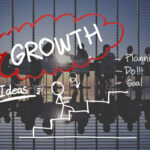TRAVEL
Hospitality Leaders discuss supply chain challenges at African Hospitality Investment Forum (AHIF) 2023

Hospitality Leaders discuss supply chain challenges at African Hospitality Investment Forum (AHIF) 2023
How intra-African trade measures, technology and a new generation of hospitality leaders are challenging “business as usual.
For too many years, African hospitality leaders have worked incredibly hard to maintain operational standards when critical products are unavailable to be sourced on time due to a myriad of reasons, from changing trade restrictions, poor transport infrastructure, currency fluctuations, and supply chain breakages.
This week leaders across the hospitality sector have descended into Nairobi city, the vibrant capital of Kenya and hub of East Africa, to join the annual African Hospitality Investment Forum (AHIF) (www.AHIF.com) to discuss growth opportunities in the region, and to share their learnings from the last year including developments across the trade and operational landscape. Attending is Toggle Market’s CEO, Fuad Sajdi, and VP of Africa, Abraham Muthogo Kamau, where they have been leading discussions on leveraging local and regional sourcing, and the innovative ways the sector is reducing operational costs.

Supply chain challenges in Africa have been one of the primary obstacles for economic growth and diversification, with businesses continuing to pay inflated prices for nearly every consumable and operational product that is not locally grown or manufactured – where even then it is more profitable to export outside the continent than to cater to the regional market due to weak intra-trade regulations.
Today there are promising signs that this status quo is changing fast.
The African hospitality industry is in the throes of a massive transformation. The catalysts? Ground-breaking trade measures, rapidly evolving technology, and a fresh generation of visionary leaders. These forces are challenging the traditional “business as usual” mindset and reshaping the African hospitality landscape.
The African Continental Free Trade Area (AfCFTA), the largest free trade area globally since the formation of the World Trade Organization, is set to significantly bolster intra-African trade. By reducing trade barriers, it allows a more fluid movement of goods, services, and people across borders. The ripple effect will be profound, with the hospitality sector one of the many industries reaping the benefits of this regional integration.
Breaking with the Past
The lessons of the Covid-19 pandemic have been harshest on the world’s largest continent which has for so long relied on suppliers in far flung countries, most heavily on goods from China, European Union (EU) countries, United States and India.
Take for instance South Africa which remains the largest importing country in Africa at 17% of all imports in the region. Its largest import partners in 2023 were China at 21.9%, followed by United States at 8.8%, Germany at 7.3%, India 5.8% and the UAE 3.6%.[1] The next largest importing countries are Nigeria, Egypt, Morocco, Kenya and Ghana.
The elephant in the room is that Intra-African trade still stands at only 15.2%, a poor showing when compared with intra-continental trade figures for America, Asia, and Europe, which stand at 47%, 61%, and 67%, respectively, and which should be at the head of the pan regional efforts to support trade and business. Much of this is due to multiple trade restrictions that exist in the region and between neighbouring countries for instance.
The recent World Bank 2022 AfCFTA report[2] shows that the borders between African countries rank among the most restrictive in the world and is the main reason there is relatively little intra-African trade and investment.
The impact of this in real terms is putting the break on the growth of regional businesses while limiting the flow of the international supply chain which in turn heavily relies on intra-African trade routes (where goods are transported across several borders by land routes) due to poor infrastructure and lack of trade and custom harmonisation.
For locally grown African hospitality investors and operators, the supply chain challenges remain acute, and ramifications have meant consistent delays in the growing pipeline of projects, along with sometimes turbulent price fluctuations on shipping and logistics services, as well as effects of weakened domestic currencies.
Our research across Toggle Hospitality clients in Africa has shown examples of multiple duties paid in this way to receive goods crossing several borders resulting in highly inflated pricing for essential products and equipment.
Trade Cooperation and Collaboration
The good news is that there are signs across all industry sectors of more joined up thinking and increased regional cooperation. For instance, amongst East African nations there has been a noticeable increase in activities across both government backed and private sector efforts through the multiple alliances that exist such as the East Africa Business Council, the East African Chamber of Commerce and Trade, and the East African Association.
In addition, the highly lauded and anticipated rollout of the African Continental Free Trade Area (AfCFTA) agreement is geared to be the largest free trade region in the world based on the number of countries – at once connecting 1.3 billion people across 55 countries with a combined gross domestic product (GDP) valued at US$3.4 trillion and with a major potential as well to lift over 30 million people out of the poverty line.
For this to succeed there will need to be mutual and significant policy reforms and trade facilitation measures to reduce red tape, simplify customs procedures, and make it easier for African businesses to integrate into global supply chains. The upside is a boost of income gains around $300 billion.
The role of technology and the importance of a knowledge-based economy will increasingly be a driving force for transforming economic prosperity. The latest report from UNCTAD has warned that neglecting the high knowledge-intensive services, such as information and communications technology services and financial services, will be a key reason holding back export diversification in Africa.[3]
A new generation of hospitality leaders in Africa making waves
One of the most exciting outcomes of more regional integration is the rise of home-grown hotel chains that are now expanding beyond their respective national borders. In 2022, intra-African travel accounted for 40% of the total number of hotel guests in the continent, up from 34% in 2019, according to the African Development Bank. This increase is partly attributable to the easing of travel restrictions and the growth of African hotel chains.
The United Nations World Tourism Organisation (UNWTO), forecasts 134 million visitors by 2035. These figures make it the second fastest growing region in tourism after Asia Pacific.
This new wave of hospitality brands is being led by a dynamic generation of African leaders who understand the local markets and are at the forefront of developing more viable value-based networks and forging stronger regional partnerships. These individuals are harnessing the benefits of the AfCFTA, using innovative practices to enhance the hospitality experience with a unique African flavour that can cater better to the African consumer needs while at the same time offering global standards of service. For example, today over 80 percent of safari lodges in South Africa are managed by indigenous brands and a part of the tourism sector that generates around 70 percent of hospitality revenue. This segment is growing rapidly across the region.
“There is a major paradigm shift taking place with progressive trade policies and cutting-edge technology. This new generation of leaders are poised to redefine the essence of hospitality in Africa. We are delighted to be participating this year at AHIF 2023 which continues year on year to help shape the African hospitality industry and spotlight investment opportunities,” said Abraham Muthogo Kamau, VP of Africa at Toggle Market.
Technology is a driving force behind this transformation. Digitization is permeating every facet of the hospitality experience from reservation systems to room service, with growing numbers of hotels now using a form of smart-room technology or employing AI-driven services such as chatbots for customer service and offering mobile apps for reservations and in-stay services.
The integration of technology has also enhanced efficiency and sustainability within the sector. African hotels can see up to 30% increase in energy efficiency and 25% reduction in water usage, thanks to the adoption of smart technologies.
Although Africa only receives 5% of the regional share of worldwide tourism[4] this number is rising after the Covid slump with 2022 seeing 47 million tourists returning to the continent after the high of 69 million in 2019. UNWTO forecasts 134 million visitors by 2035 making it the second fastest growing region in tourism after Asia Pacific. There is also robust and growing domestic tourism within Africa as increasingly middle-class families and younger travellers opt for more local and regional travel.
The supply chain, too, has been revolutionized by both trade facilitations and technology.
A recent survey revealed that the average lead time for supply delivery dropped by 15% in 2022. This improvement is due to more streamlined cross-border processes and the implementation of digital supply chain management systems. Moreover, the increased use of this technology has led to more resilient and responsive systems. More hotel chains can now track their supply deliveries in real-time, forecast demand more accurately, and react swiftly to changes in the market.
The wave of change isn’t confined to the large chains alone. It’s being felt in every corner of the industry, from boutique hotels in Accra that blend modern design with traditional Ghanian culture, to eco-friendly lodges in the Maasai Mara that champion sustainable tourism.
As intra-African trade continues to flourish and the technological landscape evolves, the African hospitality sector is preparing for an exhilarating future. This new era is being ushered in by ambitious, tech-savvy leaders who are ready to shake off the old and bring forth the new.
More from my site
BUSINESS
Resilient Future: The 2023 West Africa Property Investment Summit

Charting a Resilient Future: Insights from the 2023 West Africa Property Investment Summit
In a significant gathering of real estate influencers, the West Africa Property Investment Summit 2023, which took place on Wednesday, 23rd November, brought together leading figures from Kenya, Ghana, South Africa, and Nigeria. Under the theme “Rewriting the Narrative: Positioning & Strategies for the Future,” the summit served as a vibrant forum for in-depth discussions and strategic planning, aiming to shape the trajectory of West Africa’s real estate landscape: “Industry Leaders Chart Course For Resilient Future At The 2023 West African Property Investment Summit.”
Resilience in the Face of Macroeconomic Challenges
One of the key speakers, Mr Tola Akinhanmi, the Head of Real Estate Finance at Stanbic IBTC, took centre stage to address the challenges posed by the current macroeconomic environment. Despite grappling with inflation, exchange rate volatility, and fluctuating interest rates, Akinhanmi’s message was one of resilience. He underscored the real estate sector’s intrinsic strength, characterizing it as a long-term asset class that provides essential business infrastructure supporting people’s livelihoods, work, and recreation. Akinhanmi highlighted Stanbic IBTC’s commitment to working closely with sponsors, understanding assets, and structuring solutions that ensure stability, allowing these assets to remain relevant through various economic cycles.
Optimism for 2024: A Balanced Outlook
Oladapo Runsewe, the Projects and City Reports Lead at Estate Intel provided a positive outlook for 2024. Citing statistics from the Nigerian Bureau of Statistics that indicated an increase in the real construction sector’s contributions to the GDP in the last quarter, Runsewe foresaw a balanced and positive effect on the market. He emphasized the inevitability of construction and development continuing, driven by the ongoing demand for housing and real estate investments. However, Runsewe highlighted the imperative for collaboration, urging industry participants and the government to join forces on a larger scale to address the substantial housing deficit, particularly in urban centres like Lagos.
Sustainability as a Driving Force
Temilola Shonola, Head of the Edge Program at the International Finance Corporation (IFC), brought attention to the importance of sustainable building practices. Shonola urged developers to embrace green building, dispelling the misconception that it is an expensive endeavour. She introduced the IFC’s free App designed to simplify the green certification process, making it accessible for builders looking to contribute to environmental sustainability. Shonola stressed that more of the market need to adopt green building practices, not only for environmental reasons but also as a means to reduce utility costs and ensure long-term impact.
Navigating the Commercial Real Estate Cycle
Pepler Sandri, the Director of Capital Markets at JLL, delved into the complexities of the commercial real estate cycle. Acknowledging the sector’s challenges and the impact of the global COVID-19 pandemic, Sandri painted a picture of recovery and resilience. He noted that Nigeria, like many other countries, faced unique macro issues affecting its recovery. Looking ahead, Sandri expressed optimism as interest rates stabilize, predicting a potential recovery in the next 6-12 months in global developed markets. However, he cautioned that Nigeria might experience a longer recovery period, echoing sentiments from Stanbic’s chief economist, who suggested a year or two before a strong trajectory toward recovery becomes evident.
Conclusion: A Call for Collaboration and Sustainable Growth
The West Africa Property Investment Summit 2023 provided an invaluable platform for industry leaders to share insights, strategies, and collaborative approaches to propel the real estate sector forward. As the summit concluded, attendees were left with a renewed sense of optimism and determination to navigate the ever-evolving landscape of West Africa’s property market. The resounding message from the summit echoed the need for collaboration, sustainability, and strategic planning to ensure a resilient and prosperous future for the region’s real estate industry. Read More
More from my site
ECONOMY
Overpopulation: Leading To Decline In Scare Resources

Overpopulation: Leading To Decline In Scare Resources
Overpopulation has emerged as a global concern affecting various aspects of our lives, including the availability of resources needed for human survival. As the world’s population continues to expand at an alarming rate, it is crucial to recognize the detrimental effects it poses on our ability to sustainably manage and distribute scarce resources: “Overpopulation: Leading To Decline In Scare Resources.”
This puts immense pressure on agricultural systems to produce more food, leading to deforestation, habitat degradation and pollution caused by intensive farming practices. This article will explore how overpopulation increases the problem of resources scarcity and the consequential decline in global sustainability.
Meaning and Perspectives
Overpopulation refers to when there are more people living in a given region than there are resources available and the ecosystem can support. Due to the remarkable rate at which the world’s population is growing, this subject matter has received a lot of attention. Overpopulation can have negative effects on the environment, the economy and our overall quality of life, among other things.
One of the primary concerns associated with overpopulation is the strain it places on the earth’s limited resources. As the population increases, demand for food, water and energy rise dramatically.
The earth’s population has grown exponentially over the past century, crossing the 7.8 billion marks in 2021. This rapid expansion places an immense strain on essential resources, including food, water, energy and land.
The impact of overpopulation on the environment is not limited to the depletion of resources alone. Rapid urbanization often accompanies population growth, resulting in the destruction of natural habitats to make way for housing and infrastructure development. This loss of biodiversity has far-reaching consequences, disrupting ecosystems and disturbing the delicate balance between various species. It can lead to the extinction of certain plant and animal species, affecting biodiversity and undermining the stability of the entire ecosystem.
Moreover, overpopulation affects the economic landscape of nations. The exponential growth of population creates a high demand for jobs, housing, and resources. It results in increased competition for limited job opportunities, driving down wages and potentially leading to unemployment and poverty. Furthermore, inadequate infrastructure and insufficient public services become prevalent as governments struggle to keep up with the demands of a growing population, particularly in developing countries. This puts a strain on education, healthcare, and transportation systems, leading to compromised quality and accessibility of these essential services.
The implications of overpopulation extend beyond the environment and economy and permeate into the daily lives of individuals. As cities become overcrowded, congestion, traffic jams, and pollution become significant concerns, impacting air quality and overall health. Additionally, increased competition for resources can lead to social tensions, such as unequal distribution of wealth and resources, strained social services, and inadequate living conditions. In extreme cases, the population density can even result in crime rates and social unrest.
Facing the challenges associated with overpopulation requires collective action from individuals, communities, and governments. Education and family planning initiatives play a vital role in empowering individuals to make informed decisions about family size and reproductive health. Accessible and affordable contraceptives, alongside comprehensive sexual education programs, can help curb population growth rates. Governments need to invest in sustainable development, focusing on renewable energy sources, efficient agricultural practices, and improved infrastructure. Additionally, efforts to promote conservation and protection of natural habitats should be prioritized to preserve biodiversity and mitigate the environmental impacts of overpopulation.
Decline In Scare Resources
- Food Scarcity: With more mouths to feed, the demand for food increases significantly. Overpopulation amplifies the challenge of ensuring food security worldwide. Arable land, necessary for agriculture, is diminishing due to urbanization and soil degradation. Additionally, water scarcity further limits the ability to expand agricultural production. This interplay between population growth and limited resources leads to higher dependence on unsustainable agricultural practices, causing soil erosion, deforestation, and overuse of chemical fertilizers.
- Water Scarcity: Availability of fresh water is vital for various sectors, including agriculture, sanitation, and industrial production. Overpopulation leads to an increased demand for water, which depletes water sources faster than they can be replenished. Furthermore, population concentration in urban areas strains local water supply systems, resulting in water scarcity and compromised water quality.
- Energy Scarcity: The growing population requires more energy to power homes, industries, and transportation systems. Fossil fuels, which are currently the primary energy source, are depleting rapidly and have severe environmental consequences. Meeting escalating energy demands with finite resources leads to energy scarcity and the continued reliance on unsustainable practices that contribute to climate change and air pollution.
- Land Scarcity: As urbanization spreads, overpopulated areas face a scarcity of livable space. Rapidly expanding cities often encroach on fertile lands and natural habitats, leading to deforestation, loss of biodiversity, and reduced sustainability in land use. This undermines delicate ecosystems and disrupts the balance necessary for maintaining a healthy planet.
Causes Of Overpopulation
Today the Earth is home to more than 7.8 billion people. By 2100 the population is on track to hit 10.8 billion, according to the United Nations — and that’s assuming steady fertility declines in many countries. Interestingly, if extra progress is made in women’s reproductive self-determination, and fertility falls more than the United Nations assumes is likely, the population in 2100 might be a relatively smaller 7.3 billion. Most common causes include:
- Falling mortality rate: The primary (and perhaps most obvious) cause of population growth is an imbalance between births and deaths. The infant mortality rate has decreased globally, with 4.1 million infant deaths in 2017 compared to 8.8 million in 1990, according to the World Health Organization (WHO).
At the same time, lifespans are increasing around the world. Those of us who are alive today will likely live much longer than most of our ancestors. Global average life expectancy has more than doubled since 1900, thanks to advancements in medicine, technology, and general hygiene. Falling mortality rates are certainly nothing to complain about either, but widespread longevity does contribute to the mathematics of increasing population numbers.
- Underutilized contraception: These women aren’t using contraceptives for a variety of reasons, including social norms or religious beliefs that discourage birth control, misconceptions about adverse side effects, and a lack of agency for women to make decisions around sex and family planning. An estimated 44% of pregnancies were unintended worldwide between 2010-2014. Getting more women, the access and agency to utilize family planning methods could go a long way in flattening the population curve.
- Lack of female education: Although female access to education has increased over the years, the gender gap remains. Increasing and encouraging education among women and girls can have a number of positive ripple effects, including delayed childbearing, healthier children, and an increase in workforce participation. Plenty of evidence suggests a negative correlation between female education and fertility rates.
The Effects of Overpopulation
- Ecological degradation: An increase in population will inevitably create pressures leading to more deforestation, decreased biodiversity, and spikes in pollution and emissions, which will exacerbate climate change. Ultimately, unless we take action to help minimize further population growth heading into the remainder of this century, many scientists believe the additional stress on the planet will lead to ecological disruption and collapse so severe it threatens the viability of life on Earth as we know it.
- Increased conflicts: The scarcity brought about by environmental disruption and overpopulation has the potential to trigger an increase in violence and political unrest. We’re already seeing wars fought over water, land, and energy resources in the Middle East and other regions, and the turmoil is likely to increase as the global population grows even larger.
Sustainable Solution To Overpopulation
To address the challenges caused by overpopulation and the decline in scarce resources, it is crucial to adopt sustainable solutions:
- Population Stabilization: Promoting family planning initiatives and education, empowering women, and ensuring access to reproductive healthcare can help control population growth.
- Resource Efficiency: Encouraging sustainable farming practices, such as organic farming and irrigation management, can help conserve water and land resources. Investing in renewable energy sources and promoting energy-efficient technologies will help reduce reliance on fossil fuels.
- Urban Planning: Developing smart cities that prioritize resource management, efficient transportation, and green infrastructure can alleviate the strain on resources in densely populated areas.
Conclusion
Overpopulation poses a significant threat to the availability of scarce resources and undermines global sustainability. To mitigate the decline in these precious resources, it is crucial to focus on population stabilization, resource efficiency, and sustainable urban planning. Only through collective efforts and long-term strategies can we effectively address the challenges of overpopulation and secure a better future for generations to come.
In conclusion, overpopulation is a pressing issue with profound consequences for our planet. The strain it places on resources, the environment, the economy and the overall quality of life cannot be ignored. Recognizing the importance of addressing this issue is paramount in ensuring a sustainable future for generations to come. By taking proactive measures and implementing sustainable practices, the society at large can achieve a balanced population size that coexists harmoniously with our planet’s resources. See
More from my site
TRAVEL
TOP TOURIST ATTRACTION TO ENJOY IN SOUTH AFRICA

TOP TOURIST ATTRACTION TO ENJOY IN SOUTH AFRICA


South Africa, which is larger than both Nigeria and Ghana combined, or roughly twice the size of Texas, is one of the most diverse countries in the world and one of the most popular tourist destinations in Africa.
The country’s breathtaking landscapes include rough mountains, dense forests, verdant savannahs, and arid deserts. South Africa has the third-highest number of national parks in Africa, as well as hundreds of reserves that are home to a diverse range of species.
You can create a world-class tourism experience by combining sophisticated cities, beautiful beaches, award-winning wines, and mingling with an intriguing culture.
Even though it is difficult to include all of South Africa’s riches in tourist destinations, here is a list of the top places to visit.
SUN CITY RESORT
The most distinctive resort in the world, Sun City, is located in the center of an extinct volcano deep within the rough bushveld. The Resort is one of the top tourist attractions in South Africa because it’s unlike any other resort destination in the world and has a special heartbeat and African rhythm. Your every wish is granted in this, which is pure fantasy.
Sun City Resort, a luxurious casino, and resort, is located approximately two hours drive from Johannesburg and is popularly known in the area as Africa’s Kingdom of Pleasure. Four hotels, two championship golf courses, two casinos, a charming South African cultural village, and more than 7000 crocodiles in a sanctuary are all part of the complex.
The most visited public game reserve in South Africa is the nearby Pilanesberg Game Reserve. You must spend between 900 and 1000 rand for a night in this stunning resort.
HLUHLUWE-IMFOLOZI GAME RESERVE
The bustle of Durban, South Africa’s second-largest city, is less than a three-hour drive from Hluhluwe-iMfolozi, one of the country’s oldest game reserves and the tourist delight.
It was first built as a refuge for the last remaining southern white rhino population in the nation. This threatened heavyweight may now be seen at one of the nicest locations in Africa thanks to the initiative’s remarkable success. Giraffes, elephants, lions, and a variety of antelope, notably the elegant nyala, are among the creatures that you might see in this area.
Tickets to this wonder cost 240 rands for adults and 120 rands for youngsters, and they are good for 24 hours.
ISIMANGALISO WETLAND PARK
Along the KwaZulu-Natal coast, iSimangaliso Wetland Park is a patchwork of protected areas. One of Africa’s premier natural wetland and coastline locations. Its 239,566 hectares territory contains a variety of natural marine, coastal, wetland, estuary, and terrestrial ecosystems that are scenically stunning and essentially untouched by human intervention.
Lake St. Lucia, a large estuary densely populated with hippos, crocodiles, and water-associated species like flamingos and pelicans, sits at the center of this diversified region. South Africa’s diving hotspot is Sodwana Bay, with its stunning coral reefs, and uMkhuze Game Reserve is a perennial favorite with photographers looking for top-notch photographic hides.
Children under the age of 21 enter for 37 rands, and groups larger than 21 people enter for 213 rands.
VICTORIA AND ALFRED WATERFRONT
Due to its legendary status and location in the oldest operating harbor in the Southern Hemisphere, the V&A Waterfront is unique. The 123-hectare neighborhood, which has Table Mountain as its backdrop, is located in the stunning metropolis of Cape Town and welcomes millions of visitors from all over Africa and the rest of the world.
The Victoria and Alfred Waterfront evokes memories of the earlier days of the port and is one of Cape Town’s most popular tourist attractions. There is something for everyone to enjoy here, which is located within a hub of entertainment that is home to a variety of eateries, boutiques, bars, and theaters.
The famed Clock Tower, Chavonnes Battery, the South African Maritime Museum, and the coastal Seal Landing, where Cape Fur Seals live, are just a few of the attractions available in addition to amusements.
BLYDE RIVER CANYON
The Blyde River Canyon is the third-largest riverine gorge in the world, behind the Grand Canyon in Arizona and the Fish River Canyon in Namibia. It is the biggest “green canyon,” and is renowned for its luxuriant greenery and breathtaking beauty.
Take a picturesque drive along the Panorama Route, stopping at well-known views like the Three Rondavels and Pinnacle Rock, to fully enjoy the huge scope of this natural phenomenon from above. Or, for a different viewpoint from inside the canyon, check out the interesting Bourke’s Luck Potholes.
Each participant must pay R30 to enter. For the greatest illumination, visit during the “golden hour,” which is shortly before sunset.
THE DRAKENSBERG
With trails for all skill levels, Drakensberg is renowned for its hiking routes. There are magnificent prehistoric rock art sites in Southern and Central Drakensberg that depict the beliefs of the local San people. Numerous nature preserves with waterfalls and a variety of fauna can be found in the highlands.
The Drakensberg is linked to some of South Africa’s most stunning natural settings. This is the highest African mountain range south of Kilimanjaro, with a number of its summits rising beyond the 3,000m/9,800ft level.
Some of the best hiking paths in the nation may be found in the enormous wilderness area with its secret valleys, steep gorges, undulating plateaus, and craggy peaks.
Despite its natural beauty, the region has been designated a World Heritage Site due to the abundance of San rock murals in hidden caverns.
DURBAN BEACHES
The beaches of Durban offer a dynamic ambiance that aches with energy frequently likened to Miami Beach. Durban beaches are bustling locations that are wonderfully clean and safe, and many of the beaches offer a variety of entertainment throughout the day. They also boast pleasant weather all year round and a true beach culture.
The South and North Coast beaches in Durban include lengthy expanses of smooth, golden sand and subtropical sunshine, sometimes known as “the Golden Mile.”. The North Beach, for instance, is well-known for its safe swimming, powerful waves, lively esplanade, and cultural activities. One of the best places in Durban for water activities, peaceful strolls, and a long stretch of excellent beach is North Beach.
THE GARDEN ROUTE
One of South Africa’s most well-known and fascinating segments of coastline is the Garden Route, a temperate region of rocky shoreline, native forests, sandy beaches, and small towns where you can do everything from savor fresh oysters to observe southern right whales at play.
The Garden Route is the name given to the 200 km (125 mi) coastline that runs between Mossel Bay and Tsitsikamma. It has beautiful beaches, fantastical woods, breathtaking mountains, meandering rivers, and bird-filled lagoons. It makes sense why it is one of the most visited tourist destinations in South Africa.
TABLE MOUNTAIN
Table Mountain, one of the New Seven Wonders of the World, is a component of the Cape Floral Kingdom World Heritage Site and is abundant with different types of flowers. An astounding 8,200 different plant species, 80% of which are fynbos, may be found on Table Mountain.
Reaching the summit of Table Mountain, which has a height of 1,086 meters (3,563 feet), is easy thanks to a clever cableway, and each Rotair vehicle has to turn to the floor so that visitors can take in 360-degree vistas as they ascend, an exhilarating experience that provides breathtaking, bird’s-eye views over Cape Town, Robben Island to the north, and the Atlantic coast to the west and south.
For adults, this trip costs 290 rands, while for kids, it is 140 rand.
KRUGER NATIONAL PARK
Here, the elephant, lion, leopard, cheetah, rhino, buffalo, giraffe, hippo, and zebra—all famous safari animals of Africa—do well. More than 12,000 elephants, 27,000 African Buffalo, 2,000 leopards, and 2,800 lions can be found in the Kruger National Park. In addition, it’s thought to be the best location in the world to see a leopard.
The most popular safari location in South Africa is Kruger. The most famous park in the nation is a fantastic choice for a Big Five adventure, whether you’re taking a tour or going on a self-drive safari.
Aside from the highly sought-after shortlist of the lion, leopard, buffalo, rhino, and elephant, it is the size of a small country and is home to a large diversity of other creatures as well. Then there are the birds; with more than 500 species known, you can compile a sizable list in a few days.
BEST TIME TO VISIT SOUTH AFRICA
South Africa makes a wonder all-year-round tourist destination, the month of May – September is usually considered high season because South Africa is less cold during this time. The month of January offers the cheapest flight tickets of any time of the year to visit South Africa
In conclusion, South Africa’s call to the thrill seeker, the adventurer, and the lover of nature, is to come and experience the world in a country. With the world on offer, South Africa asks you to make it your next destination of fun and relaxation.
More from my site
-
EDUCATION2 years ago
Jamb Cut-Off Mark for A Law Degree in Nigerian Universities
-
BANKING2 years ago
POLARIS Bank Transfer Code| How to Activate the USSD Banking Code
-
BANKING2 years ago
Union Bank Transfer Code| How to Activate the USSD Banking Code
-
BANKING2 years ago
FIRST Bank Transfer Code| How to Activate the USSD Banking Code
-
BANKING2 years ago
How to Check UBA Account Balance From Anywhere
-
BANKING2 years ago
GT Bank Transfer Code| How to Activate the USSD Banking Code
-
BANKING2 years ago
Check GTB Account Balance via Internet and USSD Code
-
BANKING2 years ago
ZENITH Bank Transfer Code| How to Activate the USSD Banking Code
































![Understanding Bankruptcy [Qualifications & How to Apply]](https://financialquest.com.ng/wp-content/plugins/wordpress-23-related-postXs-plugin/static/thumbs/22.jpg)



